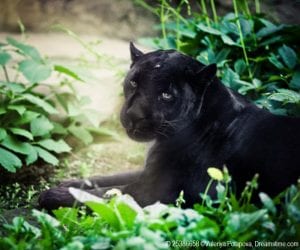Every winter when I was a kid, my family would visit my grandparents in the quiet town of Hillsdale, NY. They live close to a ski mountain called Catamount, named for the Eastern cougars that used to live there. I never learned to ski well but the mountain’s name stuck with me, and sparked a lifelong love of these wild and wonderful cats.
On January 22nd, 2018, the U.S. Fish and Wildlife Service declared the Eastern cougar extinct. These tawny cats once roamed across every state east of the Mississippi River in abundance. But throughout the 1700s and 1800s European settlers killed most of the Eastern cougars as they were perceived to threaten people and livestock. It’s actually been over 80 years since the last confirmed sighting of an Eastern cougar, so perhaps the USFWS’s decision has been a long time coming. Personally, that doesn’t make it any less devastating. Their extinction fills me with a profound sense of failure and exhaustion.
Carnivore Crisis
Species extinction was once perfectly natural, a somber yet inevitable part of evolution’s course. But today, the evolutionary causes of extinction have been replaced by human ones that are grimly efficient. About a quarter of Earth’s mammal species are currently threatened with extinction, and other carnivores like the Eastern cougar may be particularly vulnerable. With large bodies, large territories, and slow population growth these species’ populations are under severe risk from habitat loss, competition with hunters for prey, and being killed directly for sport, raw materials, or to protect livestock. Tigers, wolves, lions, leopards, bears, other cougar groups, and many more carnivore populations are declining in range and numbers across the world. If we don’t take conservation action soon, these species will disappear like the Eastern cougar.
Essential by Nature
Carnivore losses will have serious consequences for the environments where they once thrived. In fact they are essential to the health of their ecosystems, impacting everything from prey populations to plant diversity to wildlife disease dynamics and carbon sequestration.
Carnivore species that have returned or recovered in their former habitats tell a compelling story about the importance of predators for an environment. In 1991, gray wolves were reintroduced to Yellowstone National Park, where wolves had been absent since the 1920s. Without the wolves, elk and deer populations expanded uncontrollably in the park, and the native fauna was suffering from their overgrazing.
When the wolves were reintroduced (though small in number), herbivore populations stabilized, which allowed the forests and plants to recover. This in turn created habitats and resources for more birds and other species. The wolves also controlled the unruly coyote population, allowing for smaller mammals like mice, rabbits, foxes, and weasels to flourish. The carrion from their kills fed eagles and bears, helping their populations grow. Wolves transformed this ecosystem into a healthier, more biologically diverse environment. Carnivore species like wolves and cougars have profound and beneficial impacts in the places they live, and play an integral role in maintaining the natural balance that every human and living organism depends on.
Crisis in Context
This makes it all sound so simple: carnivores are great and we need to save them; reintroduce them into their historical ranges and let their populations recover. So easy, right?
Well, there’s only our growing human population and increasing demands on land and natural resources to contend with (begins to laugh nervously, dissolves into tears). Preserving and restoring carnivore populations is truly one of the thorniest areas in conservation. As amazing and necessary as carnivores are, they’re also a greater source of human-wildlife conflict than many species, most often when they kill livestock, damage property, and pose safety concerns for communities. Where these conflicts occur, people can react in ways that negatively impact carnivore populations, whether that’s directly (hunting, setting traps) or indirectly (political opposition to carnivore conservation). And really, these responses are understandable. It’s hard to blame people for taking actions they see as necessary to defend their lives and livelihoods. But as I’ve tried to demonstrate in this post, we need to balance human and environmental needs if we want a stable and enduring existence here on Earth.
Helping Carnivores Make a Comeback
Carnivores are down, but they’re not out. This is thanks in no small part to the efforts of conservationists and communities around the world dedicated to resolving human-carnivore conflicts fairly and sustainably. Effective carnivore conservation strategies that mitigate conflict include:
- Helping farmers better protect their livestock from predators, usually with better enclosures or guard dogs
- Monitoring local carnivore populations with GPS collars which allows people to plan their activities to minimize encounters
- Setting up compensation programs for farmers that lose livestock to predation
- Performing regular population counts for carnivores and translocating animals to other suitable habitat once numbers reach the maximum for a certain area
Educating youths and the public about the essential roles carnivores play in the environment is just as important for their survival. Here are some resources to help you teach about carnivores and the interconnectedness of Earth’s environments:
- Web of Life – This interactive story helps elementary students explore the connections between different parts of an ecosystem.
- World of Difference – Through a small group simulation, middle level students explore biodiversity and how it is impacted by human population growth.
- How Wolves Change Rivers – Watch this short video to learn more about the reintroduction of gray wolves to Yellowstone National Park.
Let’s make the extinction of the Eastern cougar an exception, and not the rule.



